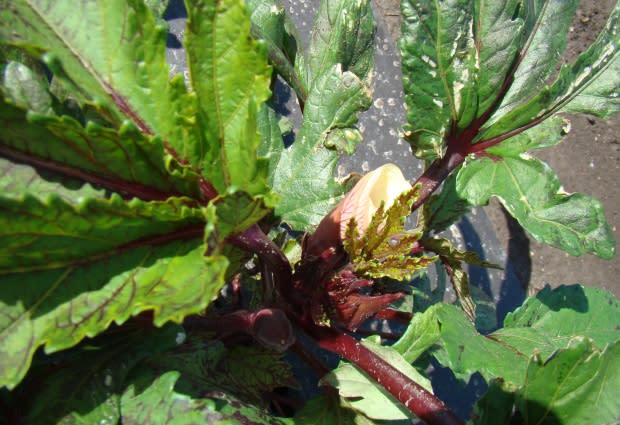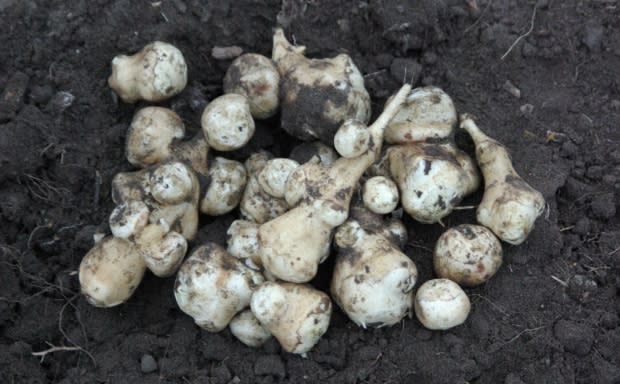Sask. gardener offers outside-the-box veggie ideas for the coming season
Yellow watermelons, elephant garlic and rat-tail radishes may not be common sights in Saskatchewan gardens, but one green thumb is hoping to get gardeners in the province to consider these and other atypical offerings.
Jackie Bantle is the greenhouse and horticulture facility manager at the University of Saskatchewan. She is speaking at St. Paul's Cathedral in Regina Thursday about unique vegetables that will grow in the province.
One example is the mouse melon, which she calls "adorable."
"They are tiny little melons, about two to three centimeters long," Bantle told CBC Saskatchewan's The Morning Edition. "And they look like a little watermelon but they are somewhat related to cucumbers. The taste is actually a cucumber and lemon."

People can put them in a salad or slice them in half, Bantle said. They're especially good for kids to grow because they can eat one now and then.
Another idea Bantle suggested is a yellow watermelon.
"It's a type of cultivar watermelon. So like all watermelons they need really warm conditions to grow. And the big thing about the yellow watermelon is it would be very rare to find it in a grocery store," Bantle said.
Yellow watermelons are juicy and contain so much water than when they're harvested they can accidentally split open. This prevents them from being shipped.
"They are delicious. They're juicy and sweet and they're a relatively shorter season than a lot of the Red watermelons so we can grow them here," Bantle said.

Saskatchewan gardeners can also grow cantaloupe with watermelon if a person puts plastic mulch on the ground to warm it up and then uses crop covers to keep the plants warm, Bantle said.
Bantle recommended looking in a seed catalogue for plants that have a growing season of 75 days or less.
Jerusalem artichokes are another recommendation from Bantle. One notable aspect of Jerusalem artichokes is that they naturally contain insulin, meaning they would not change the blood sugar levels in people who are diabetic, she said.
"Those are really easy to grow and actually they're indigenous to Canada. You can find them in the wild," Bantle said. "They're like a potato but the tubers are more gnarly and knobby and rounded, not smooth like a potato."
The taste is more starchy than a potato, she said.

Bantle said she is going to try rat-tail radish plants for the first time this season.
"We have so many root maggots out there that burrow into the radish. And so a lot of people can't even grow fresh radishes anymore," she said. "A rat-tail radish grows up as a plant but it produces these pods."
The pods are around eight to 10 centimeters long, she said, and they taste like radishes.
"You just keep picking the pods and the more pods you pick the more pods they produce," she said.
Bantle's talk is being presented by the Regina Horticultural Society. It begins at 7 p.m. CST Thursday at St. Paul's Cathedral.


